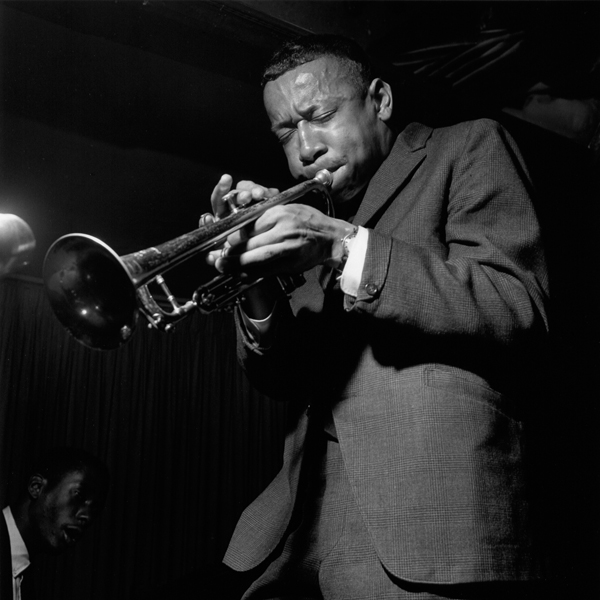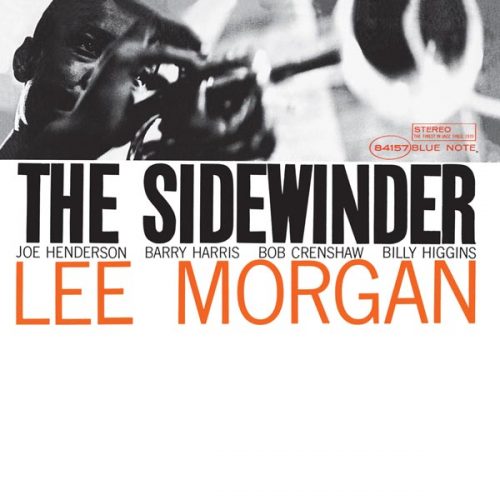December 4, 2020
From dwelling in the depths of despairing obscurity to being the celebrated champion of a new style of jazz, trumpeter Lee Morgan paved the way for the popularity of the 60s soul-jazz phenomenon with his catchy 10-minute gem, “The Sidewinder.” While all sorts of innovations in jazz being distilled at the time—from Miles Davis’s new-styled quintet to John Coltrane’s classic quartet—the brewing of boogaloo came of age through the trumpeter’s distinctive voice and upbeat, funky original compositions.
The Sidewinder—recorded in December 1963 at Rudy Van Gelder’s studio and released in 1964—was both a comeback and a coronation. The lead-off title track became a crossover hit that in edited form became a high-charting single and even got scooped up by the automaker Chrysler for a TV commercial (used without permission or compensation, the ad was soon yanked). The tune, with a simple—and listener accessible—24-bar blues theme, was omnipresent on the airwaves and in jukeboxes. The first album pressing of 4,000 copies sold out within days.
A significant back story: Morgan had recorded as a hard-bop leader with Blue Note in his first round of association with the label from the mid-50s to early 60s. The rising trumpeter star, who came up under the wings of Dizzy Gillespie in his short-lived big band, broke onto the recording scene with his 1956 debut Lee Morgan Indeed! at the age of 18 and concluded in 1960 with Lee-Way. Meanwhile, Morgan solidified his Blue Note standing as a member of Art Blakey’s Jazz Messengers, where he was encouraged by the drummer to contribute compositions to the band. However, Morgan came crashing down and was forced into exile—from his New York base to his Philadelphia hometown—because of his addiction to heroin.
When Morgan returned to New York, in 1963 he rejoined the Blue Note ranks, first as sideman for albums recorded by Hank Mobley and Grachan Moncur III, and then once again as a full-fledged leader. His rebound recording was The Sidewinder—with a young and future-star support team, comprising tenor saxophonist Joe Henderson, pianist Barry Harris, bassist Bob Cranshaw and drummer Billy Higgins—that turned out to be his most commercial success. Rumor has it, via his friend drummer Billy Hart, that the title track was “filler.” Filler indeed. The near-perfect dance-friendly tune and the rest of the album tracks taken as a whole are seminal, ushering in what turned out to wave after wave of oftentimes futile attempts to emulate—and even replicate.
The Sidewinder features a revitalized and energized Morgan, who penned all five of the pieces—none of them in the ballad zone. The leadoff, of course, is the skip-and-bounce hit with Cranshaw’s bass riff opening the show. Morgan slurs and plays clarion on the trumpet and also takes a fast bluesy run to lead the charge followed by the passing of the solo baton, first with Henderson’s tenor gusto, then Harris’s grooving break and Cranshaw’s dark-toned pulsings. The rhythm section is key as are the indelible melodic line shared by Morgan and Henderson.
The boogaloo bash continues with the swinging “Totem Pole,” teeming with rousing improvisation; the upbeat blues-steeped “Gary’s Notebook,” with Morgan and Henderson playfully swirling around each other in the head; the ¾ time caper “Boy, What a Night” with spirited band member chatter in the background; and the straight-ahead flow of “Hocus-Pocus,” where Higgins gets to tumble while the horns play out the melody.
In subsequent years, many tried to capture Morgan’s special soul-jazz essence, which Blue Note encouraged, but The Sidewinder made its mark as a milestone album that stands the test of time. It resurrected Morgan’s career, re-established him as one of jazz’s top trumpeters and inspired him to continue his prolific career, which in 1972 at the age of 33 was tragically cut short. But “The Sidewinder”—ironically named not for the snake, but a TV villain—dances on, full of funk and soul and the playful spirit that Morgan brought to his second coming-out party with Blue Note. It came out of the blue, totally unexpected, but listening now, it’s as if the tune and the album were ordained to light a spark for the decade—and beyond.
Get the Classic Vinyl Edition of The Sidewinder on the Blue Note Store.







